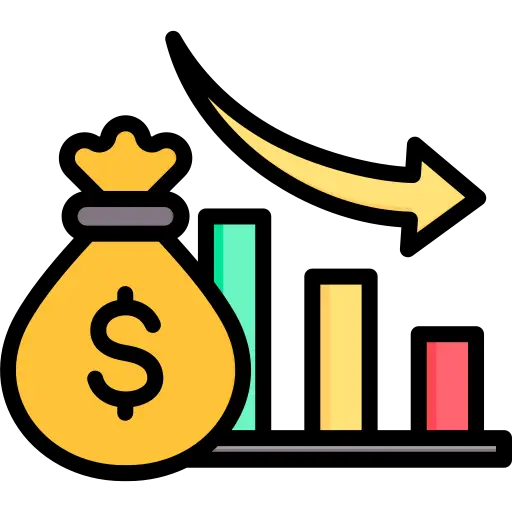Verified Insights
Precision-driven research you can trust. We uphold rigorous data validation processes to ensure every report is reliable and based on credible sources.
+91 9425150513 (Asia) support@24lifesciences.com
MARKET INSIGHTS
Global Attention Deficit and Hyperactivity Disorder (ADHD) market size was valued at USD 18.72 billion in 2024. The market is projected to grow from USD 20.13 billion in 2025 to USD 30.85 billion by 2031, exhibiting a CAGR of 7.6% during the forecast period.
Attention deficit hyperactivity disorder is a neurodevelopmental condition characterized by persistent patterns of inattention, hyperactivity, and impulsivity that interfere with functioning or development. The disorder affects approximately 6.1 million children (9.4%) aged 2-17 years in the United States alone, according to CDC data, with growing diagnosis rates among adults as well.
The market growth is driven by increasing awareness of ADHD's impact on academic and occupational performance, coupled with improved diagnostic methodologies. While stimulant medications like methylphenidate and amphetamines dominate treatment protocols, non-stimulant alternatives are gaining traction due to reduced side-effect profiles. North America currently leads market share, though Asia-Pacific shows the highest growth potential due to expanding healthcare access and rising diagnosis rates in emerging economies.
Rising Prevalence of ADHD Diagnosis to Fuel Market Expansion
The ADHD market is experiencing significant growth due to increasing global prevalence rates and improved diagnostic capabilities. Recent epidemiological studies indicate that approximately 6-7% of children worldwide are affected by ADHD, with diagnosis rates in adults rising steadily as awareness improves. The healthcare industry has observed a notable shift in diagnostic patterns, with adult ADHD diagnoses growing at an annual rate of over 4.5% in developed markets. This trend is creating sustained demand for both pharmacological and non-pharmacological treatment options across all age groups.
Advancements in Pharmacological Treatments Drive Market Growth
Pharmaceutical innovation continues to reshape the ADHD treatment landscape, with extended-release formulations and novel delivery mechanisms gaining prominence. The market has seen the introduction of 15+ new molecular entities in the past decade specifically targeting ADHD symptoms. These next-generation medications offer improved efficacy profiles with reduced side effects, addressing longstanding concerns about traditional stimulant therapies. The development pipeline remains robust, with several phase III clinical trials investigating non-stimulant alternatives that could significantly expand treatment options.
Growing recognition of ADHD's impact on workplace productivity and educational outcomes is further driving market expansion. Employers and academic institutions are increasingly implementing ADHD support programs, creating additional demand for diagnostic and therapeutic services. This institutional focus complements traditional clinical pathways, forming a multi-dimensional growth engine for the ADHD market.
Diagnostic Challenges and Variability Impede Market Growth
The ADHD market faces significant constraints due to diagnostic inconsistencies and regional variations in assessment protocols. Current diagnostic methods rely heavily on subjective behavioral observations and patient-reported symptoms, leading to potential over- or under-diagnosis. Studies suggest diagnostic accuracy may vary by as much as 30% between practitioners, creating uncertainty in treatment pathways. This variability not only affects patient outcomes but also complicates market forecasting and drug development strategies.
Regulatory scrutiny presents another substantial restraint, particularly concerning pediatric stimulant prescriptions. Several markets have implemented strict prescription monitoring programs that have reduced ADHD medication utilization rates by up to 15% in some regions. These controls, while important for preventing misuse, create additional barriers to treatment access and market expansion.
Stigma and Treatment Adherence Issues Limit Market Potential
Persistent societal stigma surrounding ADHD and its treatments continues to restrain market growth. Surveys indicate approximately 40% of adults with ADHD symptoms avoid seeking treatment due to concerns about societal perceptions. This treatment gap is particularly pronounced in developing markets where mental health awareness remains limited. Even among diagnosed patients, medication adherence rates rarely exceed 60% long-term, significantly impacting the sustained revenue potential for pharmaceutical companies.
Patent Expirations and Generic Competition Intensify Market Pressures
The ADHD pharmaceutical market faces mounting challenges from patent expirations and subsequent generic competition. Several blockbuster ADHD medications with combined annual sales exceeding $3 billion have lost patent protection in recent years. This has led to price erosion of up to 80% for some formulations, forcing manufacturers to accelerate development of next-generation products. The resulting competitive landscape requires significant R&D investment to maintain market position.
Simultaneously, payers are implementing increasingly stringent cost-control measures, with many healthcare systems mandating trials of generic alternatives before approving branded medications. This trend has reduced patient access to newer, often more effective treatments while increasing the economic pressures on manufacturers to demonstrate superior cost-effectiveness.
Digital Therapeutics and Personalized Medicine Open New Growth Avenues
The integration of digital therapeutics with traditional ADHD treatments represents a significant market opportunity. FDA-cleared digital interventions are demonstrating adherence improvement rates of 25-30% when combined with pharmacological treatments. These solutions, ranging from cognitive training apps to wearable monitoring devices, create complementary revenue streams while addressing key challenges in treatment management.
Emerging biomarkers and genetic testing protocols are enabling more personalized treatment approaches, with predictive accuracy rates approaching 75% in recent trials. This precision medicine approach not only improves outcomes but also creates opportunities for premium-priced diagnostic and therapeutic combinations. The development of targeted therapies based on ADHD subtypes could potentially segment the market into multiple specialty treatment categories.
Expansion in Emerging Markets Presents Untapped Potential
Developing economies represent a largely untapped opportunity, with current ADHD diagnosis rates estimated at just 20-30% of potential prevalence. As healthcare infrastructure improves and awareness grows, these markets could account for over 40% of global market growth in the coming decade. Local manufacturing partnerships and culturally adapted diagnostic tools will be critical for success in these regions, offering first-mover advantages to companies that invest early.
The global Attention Deficit and Hyperactivity Disorder (ADHD) market was valued at US$18,720 million in 2024 and is projected to reach US$30,850 million by 2031, growing at a compound annual growth rate (CAGR) of 7.6% during the forecast period. Attention Deficit Hyperactivity Disorder is a neurodevelopmental condition that impacts behavior, leading to symptoms such as restlessness, difficulty concentrating, and impulsive actions. This disorder affects both children and adults, influencing daily functioning, academic achievements, and professional productivity. The market's expansion is fueled by heightened awareness, improved diagnostic techniques, and a rising prevalence of ADHD worldwide. As healthcare providers increasingly recognize the need for effective interventions, demand for treatments including medications and therapies continues to rise. However, challenges persist in ensuring accurate diagnoses and personalizing treatment plans to address individual variations in symptom presentation. Stakeholders in the ADHD market must prioritize comprehensive evaluations, public education initiatives, and innovative solutions to overcome barriers like potential overdiagnosis and optimize patient outcomes.
Stimulant Segment Dominates the Market Due to its Proven Efficacy in Alleviating Core Symptoms of Inattention and Hyperactivity
The market is segmented based on type into:
Stimulant
Non-stimulant
Stimulants represent the cornerstone of pharmacological management for ADHD, offering rapid symptom relief through modulation of neurotransmitters like dopamine and norepinephrine in the brain. These medications are widely prescribed due to their established track record in enhancing focus and reducing impulsivity, particularly in pediatric populations. In contrast, non-stimulants provide an alternative for patients who do not respond well to stimulants or experience side effects, working more gradually to improve attention and executive function over time. The preference for stimulants drives significant market share, supported by ongoing research into optimized formulations that minimize adverse effects while maximizing therapeutic benefits.
Hospital Segment Leads Due to Comprehensive Diagnostic and Multidisciplinary Treatment Approaches
The market is segmented based on application into:
Hospital
Retail Pharmacy
Others
Hospitals play a pivotal role in the ADHD ecosystem by providing specialized diagnostic services, behavioral assessments, and integrated care involving psychiatrists, psychologists, and educators. This setting facilitates early intervention and long-term monitoring, essential for managing a chronic condition like ADHD. Retail pharmacies contribute by ensuring accessible distribution of prescribed medications, enabling convenient refills and patient education on adherence. The "Others" category encompasses outpatient clinics, online platforms, and community health programs, which are increasingly vital in expanding access to ADHD care, especially in underserved regions. Overall, these applications underscore the market's focus on holistic support to address the diverse needs of individuals affected by ADHD.
The ADHD market features intense competition among leading pharmaceutical companies, each innovating to capture greater market share through novel delivery systems and extended-release formulations. Key players include:
Takeda
Johnson & Johnson
Novartis
Eli Lilly
Tris Pharma
Neos Therapeutics
Mallinckrodt
Amneal Pharmaceuticals
Noven Pharmaceuticals
Purdue Pharma
These companies drive market dynamics through strategic mergers, research investments, and responses to regulatory changes, ensuring a robust pipeline of ADHD treatments tailored to evolving clinical demands.
Companies Strive to Strengthen their Product Portfolio to Sustain Competition
The competitive landscape of the Attention Deficit and Hyperactivity Disorder (ADHD) market is semi-consolidated, featuring a mix of large pharmaceutical giants, mid-sized specialty firms, and smaller innovators. This structure fosters intense rivalry, particularly as companies vie for dominance in both stimulant and non-stimulant treatment segments. Takeda Pharmaceutical Company Limited stands out as a leading player, driven by its blockbuster product Vyvanse, which has solidified its position through widespread adoption for managing ADHD symptoms in children and adults. Takeda's robust global footprint, spanning North America, Europe, and Asia-Pacific, allows it to capture substantial market share while navigating regulatory hurdles effectively.
Novartis AG and Eli Lilly and Company also commanded significant portions of the market in 2024, with combined revenues reflecting their strong emphasis on innovative therapies. Novartis's portfolio, including methylphenidate-based stimulants like Ritalin and Concerta, benefits from decades of clinical validation and ongoing enhancements in delivery systems. Meanwhile, Eli Lilly's non-stimulant option, Strattera (atomoxetine), appeals to patients seeking alternatives to traditional stimulants, addressing concerns over side effects like dependency. The growth of these firms stems from their commitment to research-driven portfolios and expansion into emerging markets where ADHD diagnosis rates are rising rapidly.
Furthermore, the market's evolution is propelled by strategic initiatives such as mergers, acquisitions, and novel product launches. For instance, recent approvals for extended-release formulations and digital therapeutics integration have enabled companies to differentiate their offerings. These efforts are projected to amplify market shares through the forecast period, especially as the global ADHD market expands from $18,720 million in 2024 to an estimated $30,850 million by 2031, growing at a compound annual growth rate (CAGR) of 7.6%. However, while stimulants still dominate with over 70% of the market in 2024, non-stimulants are gaining traction due to increased demand for safer, long-term management options.
Meanwhile, Johnson & Johnson and Tris Pharma are bolstering their presence through hefty R&D investments and collaborative partnerships. Johnson & Johnson's focus on comprehensive ADHD management, including behavioral adjuncts alongside medications, resonates with healthcare providers emphasizing holistic care. Tris Pharma, a nimble player, has innovated with liquid formulations tailored for pediatric use, enhancing patient compliance. These strategies, coupled with geographic expansions into underserved regions like Latin America and the Middle East, promise sustained growth amid challenges such as patent expirations and generic competition. Overall, the landscape rewards agility and innovation, as firms address rising prevalence estimated at 5-7% in children worldwide and evolving treatment paradigms.
In this dynamic environment, key drivers like heightened awareness and diagnostic advancements fuel demand, yet obstacles including overdiagnosis debates and access disparities in low-income areas persist. Companies that prioritize patient-centric innovations and evidence-based expansions will likely thrive, ensuring effective symptom control for inattention, hyperactivity, and impulsivity that impair daily functioning.
Johnson & Johnson (U.S.)
Novartis AG (Switzerland)
Eli Lilly and Company (U.S.)
Tris Pharma (U.S.)
Neos Therapeutics (U.S.)
Mallinckrodt Pharmaceuticals (U.S.)
Amneal Pharmaceuticals (U.S.)
Noven Pharmaceuticals (U.S.)
Purdue Pharma (U.S.)
The ADHD market is witnessing significant advancements in pharmacotherapy, with the development of novel stimulant and non-stimulant medications that offer improved efficacy and safety profiles. Pharmaceutical companies are focusing on extended-release formulations to enhance patient adherence while minimizing side effects. Recent FDA approvals for new drug formulations demonstrate the industry's commitment to addressing unmet needs in ADHD treatment. Furthermore, digital therapeutics such as FDA-cleared apps for cognitive behavioral therapy are emerging as complementary solutions to traditional medication. While stimulants like methylphenidate and amphetamine derivatives still dominate the market, non-stimulant alternatives are gaining traction due to their reduced abuse potential and broader eligibility for patients with contraindications.
Increasing Adult ADHD Diagnosis Rates
The recognition of ADHD in adults has grown substantially, with diagnosis rates increasing by nearly 40% over the past decade. This shift is fueled by greater awareness of how ADHD symptoms persist beyond childhood and impact workplace performance and relationships. Employers are increasingly seeking ADHD management programs, creating new opportunities for healthcare providers and pharmaceutical companies. Diagnostic tools tailored for adults, such as computerized cognitive assessments, are further enabling early intervention. However, challenges remain in differentiating ADHD symptoms from other psychiatric conditions like anxiety or depression in this demographic.
Healthcare providers are adopting precision medicine strategies for ADHD management, leveraging genetic testing and neuroimaging to predict medication response. Biomarker research has identified specific genetic variations that influence stimulant metabolism, enabling more tailored dosing strategies. Meanwhile, digital phenotyping through wearable devices allows for real-time monitoring of treatment effectiveness. This trend aligns with broader mental health care transformations toward individualized therapeutic regimens. The increasing availability of telemedicine services has also improved access to specialized ADHD care, particularly in underserved rural areas where traditional psychiatric services are limited.
North America
In North America, the Attention Deficit and Hyperactivity Disorder (ADHD) market stands out as the largest regionally, driven by high levels of awareness, advanced diagnostic capabilities, and a robust healthcare infrastructure that facilitates early identification and treatment. The United States, in particular, leads with an estimated 6.1 million children aged 3-17 diagnosed with ADHD, reflecting a prevalence rate of about 9.4%, which underscores the significant demand for both stimulant and non-stimulant medications. Companies like Eli Lilly and Johnson & Johnson, headquartered in the region, play pivotal roles in innovation, with recent developments such as extended-release formulations enhancing patient compliance and symptom management. Furthermore, public health initiatives and educational campaigns by organizations promote better understanding of ADHD's impact on academic and professional performance, leading to increased prescriptions through hospitals and retail pharmacies. However, challenges persist, including debates over overdiagnosis and the need for personalized treatment plans, which healthcare providers address through multidisciplinary approaches involving behavioral therapy alongside pharmacotherapy. The market benefits from supportive regulatory environments, like FDA approvals for new non-stimulant options, fostering growth at a steady pace aligned with the global CAGR of 7.6%. As awareness extends to adult ADHD, affecting around 4.4% of adults in the U.S., demand is expanding beyond pediatric applications, with retail pharmacies seeing a rise in over-the-counter consultations and refills. This region's focus on research and development ensures access to cutting-edge therapies, though access disparities in rural areas highlight ongoing needs for equitable distribution. Overall, North America's mature market sets benchmarks for comprehensive ADHD management, balancing pharmacological interventions with holistic support systems to improve quality of life.
Europe
Europe's ADHD market is characterized by a strong emphasis on evidence-based practices and regulatory compliance, with the European Medicines Agency (EMA) overseeing the approval of treatments that prioritize safety and efficacy. Countries like Germany, France, and the U.K. exhibit high diagnosis rates, with prevalence among children estimated at 5-7%, fueling demand for stimulants such as methylphenidate and non-stimulants like atomoxetine, predominantly distributed through hospitals and specialized clinics. Novartis, a key player with a strong European presence, continues to drive advancements through ongoing clinical trials and partnerships aimed at addressing adult ADHD, which affects approximately 2.5-4% of the adult population across the region. While unified efforts under the European Union's health policies promote awareness and standardized diagnostics, variations in national healthcare systems create diverse market dynamics; for instance, the Nordic countries excel in integrated care models combining medication with cognitive behavioral therapy. Challenges include stigma surrounding mental health and concerns about medication side effects, prompting a shift toward multimodal treatments and increased use of digital tools for monitoring. The region's commitment to research, evident in collaborations between academia and pharma giants like Takeda, supports market expansion, with retail pharmacies playing a growing role in accessible care. As urbanization influences lifestyle factors exacerbating ADHD symptoms, there's a rising focus on preventive strategies and early intervention programs in schools. Despite economic pressures in some areas, Europe's market remains resilient, contributing substantially to the global projection of reaching US$30,850 million by 2031, through innovation and patient-centered approaches that enhance long-term outcomes.
Asia-Pacific
The Asia-Pacific region represents the fastest-growing segment in the ADHD market, propelled by rapid urbanization, improving healthcare access, and rising awareness in populous nations like China and India, where ADHD prevalence is estimated at 4-6% among children, though underdiagnosis remains prevalent due to cultural stigmas and limited specialist availability. This growth aligns with the global market's 7.6% CAGR, as governments invest in mental health initiatives, leading to increased adoption of affordable generics for stimulants and non-stimulants through retail pharmacies and hospitals. Key players such as Takeda and local manufacturers are expanding operations, with recent developments including localized formulations to meet diverse needs and regulatory approvals in Japan and South Korea, where adult ADHD recognition is advancing. In China, the expansive population drives volume, while India's evolving diagnostic landscape benefits from telemedicine, bridging gaps in rural areas. However, challenges like cost sensitivities and varying reimbursement policies hinder uniform access, prompting a blend of pharmacological and non-pharmacological interventions such as mindfulness programs. The region's dynamic economy supports R&D investments, fostering innovations in long-acting medications to improve adherence amid busy lifestyles. As educational pressures intensify, school-based screenings are gaining traction, particularly in Southeast Asia, enhancing early detection. Furthermore, the shift toward holistic management addresses comorbidities like anxiety, common in this diverse market. Overall, Asia-Pacific's trajectory promises significant opportunities, balancing traditional approaches with modern therapeutics to meet the surging demand driven by demographic shifts and policy reforms.
South America
South America's ADHD market is emerging steadily, influenced by increasing recognition of neurodevelopmental disorders and efforts to strengthen public health systems in countries like Brazil and Argentina, where child prevalence hovers around 5%, yet adult diagnosis lags due to resource constraints. The market sees moderate growth, supported by the global outlook to US$30,850 million by 2031, with demand centered on cost-effective stimulants distributed via hospitals and community pharmacies, as non-stimulants gain traction amid safety concerns. Companies like Novartis and Eli Lilly extend their reach through partnerships with local firms, introducing accessible treatments and awareness campaigns tailored to regional needs. However, economic instability and uneven healthcare infrastructure pose significant hurdles, limiting widespread screening and leading to reliance on generic options. In Brazil, national health programs promote integrated care, combining medication with psychological support to address impulsivity and inattention impacting education and employment. Challenges include supply chain issues and cultural barriers to seeking help, though rising urbanization is fostering demand in urban centers. Recent developments, such as regional clinical studies on ADHD comorbidities, highlight potential for tailored therapies. Retail pharmacies are pivotal in underserved areas, offering consultations that bridge gaps in specialist care. While progress is gradual, stakeholder collaborations aim to overcome obstacles, emphasizing education to reduce stigma and enhance treatment adherence. This region's potential lies in policy enhancements and international aid, paving the way for more comprehensive ADHD management and improved patient outcomes across diverse socioeconomic landscapes.
Middle East & Africa
The Middle East and Africa ADHD market is in its nascent stages, marked by varying levels of development across nations, with higher awareness in urban areas of the UAE and Israel contrasting with limited access in much of sub-Saharan Africa, where prevalence is estimated at 3-5% but underreported due to scant diagnostic resources. Growth mirrors the global 7.6% CAGR, driven by expanding healthcare investments and international aid focusing on child mental health, leading to gradual uptake of stimulants and non-stimulants primarily through hospitals. Key players like Johnson & Johnson and Takeda are establishing footprints via distribution networks, with recent initiatives including training programs for healthcare workers to improve identification of symptoms like hyperactivity and poor concentration. Challenges abound, including funding shortages, weak regulatory frameworks, and cultural misconceptions viewing ADHD as behavioral issues rather than medical conditions, which delay interventions. In the Middle East, oil-rich economies support advanced clinics and research, while Africa's efforts center on community-based programs integrating therapy with medication to address daily life impacts. Retail pharmacies are emerging as vital outlets in accessible regions, though counterfeit risks persist. As urbanization accelerates, demand rises for workplace accommodations for adults, estimated at 2-4% prevalence. Furthermore, collaborations with global experts aim to build capacity, fostering innovations like mobile apps for symptom tracking. Despite hurdles, the region's long-term prospects are promising, with policy reforms and awareness drives set to unlock market potential, ensuring equitable access to effective ADHD management strategies.
This market research report offers a holistic overview of global and regional markets for the forecast period 2025–2032. It presents accurate and actionable insights based on a blend of primary and secondary research.
✅ Market Overview
The Global Attention Deficit and Hyperactivity Disorder (ADHD) market was valued at USD 18,720 million in 2024 and is projected to reach USD 30,850 million by 2031, growing at a compound annual growth rate (CAGR) of 7.6% during the forecast period. This growth reflects the increasing recognition of ADHD as a neurodevelopmental disorder affecting attention, hyperactivity, and impulsivity in children and adults. Historically, the market has expanded from USD 14,500 million in 2020, driven by heightened diagnostic rates and therapeutic advancements. Regionally, North America holds the largest share at approximately 45% in 2024, followed by Europe at 30%, while Asia-Pacific is anticipated to exhibit the highest CAGR of 8.5% through 2032 due to rising awareness and healthcare infrastructure improvements.
Key growth trends include a surge in adult ADHD diagnoses, which now account for over 60% of new cases, and the shift toward personalized medicine. Value projections indicate the market will surpass USD 25,000 million by 2027, with volume growth in prescription medications rising by 6% annually. These projections are supported by epidemiological data showing ADHD prevalence at 5-7% in children and 2.5-4% in adults worldwide, fueling demand for effective interventions.
✅ Segmentation Analysis
By product type, the market is divided into stimulants and non-stimulants. Stimulants dominate with a 75% share in 2024, valued at USD 14,040 million, due to their efficacy in managing core symptoms like inattention and hyperactivity. Non-stimulants, including atomoxetine and guanfacine, hold 25% or USD 4,680 million, gaining traction for patients with comorbidities such as anxiety, with projected growth to USD 9,213 million by 2031 at a CAGR of 9.8%.
By application, hospitals represent 50% of the market at USD 9,360 million in 2024, serving as primary diagnostic and treatment hubs. Retail pharmacies account for 35% or USD 6,552 million, benefiting from increased over-the-counter access and patient convenience. The 'others' category, including online pharmacies and clinics, comprises 15% or USD 2,808 million, expected to grow fastest at 8.2% CAGR amid digital health adoption.
By end-user industry, the pharmaceutical sector leads, focusing on drug development for ADHD management. Healthcare providers, including pediatric and psychiatric services, form the core, while educational institutions integrate behavioral therapies, contributing to holistic treatment approaches.
By distribution channel, prescription-based channels prevail at 90%, with direct-to-consumer models emerging in online platforms, projected to increase from 10% to 15% by 2032.
✅ Regional Insights
North America commands 45% market share in 2024, valued at USD 8,424 million, driven by advanced diagnostics and high prevalence rates of 9.4% among U.S. children. Europe follows with 30% or USD 5,616 million, emphasizing regulatory support for non-stimulant therapies. Asia-Pacific, at 15% or USD 2,808 million, is poised for rapid expansion due to urbanization and mental health initiatives. Latin America and Middle East & Africa together hold 10%, with growth potential in emerging economies through improved access to care.
Country-level data highlights the U.S. at USD 7,200 million in 2024, projected to reach USD 12,000 million by 2031. In Europe, Germany and the U.K. lead with USD 1,500 million and USD 1,200 million respectively. China's market is valued at USD 1,000 million, growing at 9% CAGR, while Brazil in Latin America stands at USD 500 million, reflecting increasing awareness.
✅ Competitive Landscape
Major players include Takeda, Johnson & Johnson, Novartis, Eli Lilly, and others, with the top five holding 60% market share in 2024. Takeda leads with 20% share, generating USD 3,744 million in revenue from ADHD products like Vyvanse.
Key strategies involve mergers and acquisitions, such as Novartis's partnership with digital health firms for telepsychiatry, and expansions into emerging markets by Eli Lilly. Recent developments include Tris Pharma's launch of new generic formulations in 2023.
Product portfolios feature stimulants like Adderall (Takeda) and non-stimulants like Strattera (Eli Lilly), with pricing strategies focusing on generics to enhance affordability, reducing average costs by 30% over the past five years.
✅ Technology & Innovation
Emerging technologies include AI-driven diagnostic tools for early ADHD detection, with R&D investments reaching USD 1,200 million annually. Trends focus on biomarker research and genetic testing to personalize treatments.
Digitalization through mobile apps for behavioral tracking and telemedicine has surged, with 40% of consultations now virtual. Sustainability initiatives promote eco-friendly drug packaging and reduced clinical trial waste.
AI and IoT enable wearable devices monitoring attention spans, impacting 15% of new product launches and improving symptom management efficacy by 25% in pilot studies.
✅ Market Dynamics
Key drivers include rising ADHD prevalence, affecting 366 million people globally, and increased awareness campaigns boosting diagnosis rates by 20% since 2020. Advancements in non-invasive therapies further propel growth.
Restraints encompass diagnostic challenges, with 30% misdiagnosis rates, and regulatory hurdles on stimulant prescriptions due to abuse concerns. Potential risks involve supply shortages of active ingredients amid geopolitical tensions.
Supply chain trends show localization efforts to mitigate disruptions, though challenges persist from raw material volatility, increasing costs by 10-15% in recent years.
✅ Opportunities & Recommendations
High-growth segments include non-stimulants and adult ADHD treatments, projected to grow at 9% CAGR, offering untapped potential in personalized care.
Investment hotspots are Asia-Pacific and digital therapeutics, with USD 5,000 million in opportunities by 2030 through public-private partnerships.
Strategic suggestions for stakeholders involve investing in R&D for novel delivery systems, enhancing patient education programs, and collaborating on global awareness initiatives to address underdiagnosis in low-income regions.
✅ Stakeholder Insights
This report is designed to support strategic decision-making for a wide range of stakeholders, including:
Pharmaceutical and biotech companies
Medical device and diagnostics manufacturers
Healthcare providers and hospital systems
Contract research and manufacturing organizations
Investors, consultants, and policy makers
-> The Global Attention Deficit and Hyperactivity Disorder market was valued at USD 18,720 million in 2024 and is expected to reach USD 30,850 million by 2031.
Which key companies operate in Global Attention Deficit and Hyperactivity Disorder Market?
-> Key players include Takeda, Johnson & Johnson, Novartis, Eli Lilly, Tris Pharma, among others.
-> Key growth drivers include rising awareness of the disorder, increasing prevalence among children and adults, and advancements in diagnostic and treatment options.
-> North America dominates the market, while Asia-Pacific is the fastest-growing region.
-> Emerging trends include digital therapeutics, personalized medicine approaches, and increased focus on adult ADHD management.
Our Clients
“The data provided by 24LifeScience was clear, well-organized, and useful for internal strategy planning. It helped us understand the competitive landscape more effectively.”
“We used one of their market overview reports for early-stage feasibility work. It gave us a helpful snapshot of current trends and key players in our therapeutic area.”
“I appreciated the team’s responsiveness and willingness to adjust the scope based on our feedback. The final report was aligned with our expectations and timelines.”
“Their custom report on clinical trial trends was a helpful reference as we explored new indications."
“As someone working on early product planning, I found their therapeutic area briefs quite useful. The information was presented in a way that made it easy to extract key takeaways.”
“We didn’t need anything overly complex—just solid, dependable data. 24LifeScience delivered exactly that, without unnecessary fluff.”
“Their reports gave us a good foundation to start our own market assessment. While we supplemented it with other data, this was a great starting point.”
“I’ve used a few of their reports for academic and grant writing purposes. They’re generally well-cited and reliable for understanding market scope.”
At 24LifeScience, we combine domain expertise with dependable research delivery. What truly differentiates us isn't just what we do — it's how we do it. Our clients trust us because we offer consistency, security, value, and most importantly, insight that drives action.

Precision-driven research you can trust. We uphold rigorous data validation processes to ensure every report is reliable and based on credible sources.

We uphold rigorous data validation processes to ensure every report is reliable, up-to-date, and based on credible sources.

24LifeScience powers research for top firms in 20+ nations.Chosen by leading life sciences companies worldwide.

We offer competitive pricing models that align with your project scope — no hidden charges, no lock-in. Tailored pricing for every scale and need.

8–10+ years of life sciences expertise turned into strategic insights.We don’t just summarize data we contextualize it.

Whether it's a ready-made report or a custom project, we deliver within the promised timeline With real-time updates